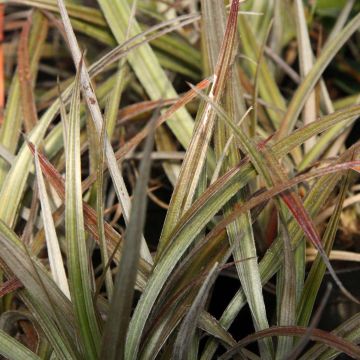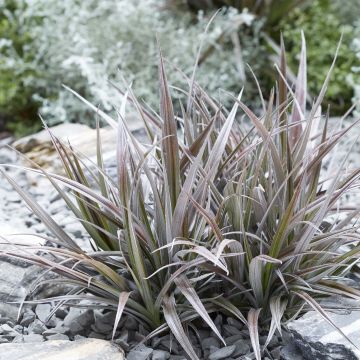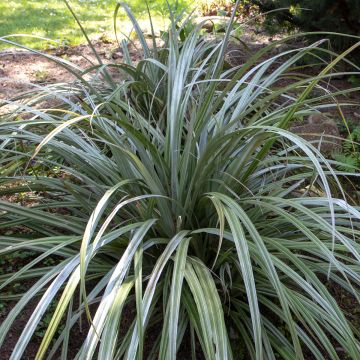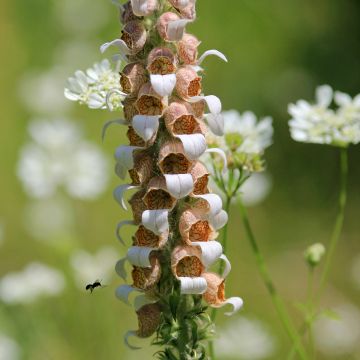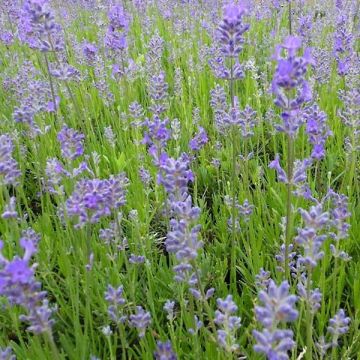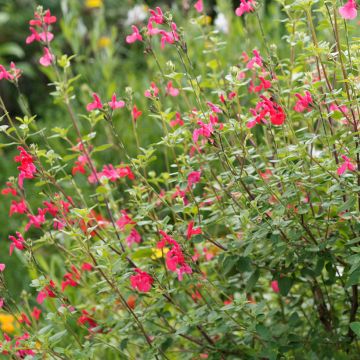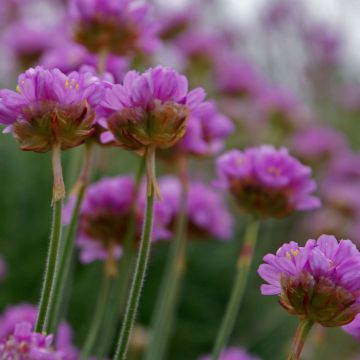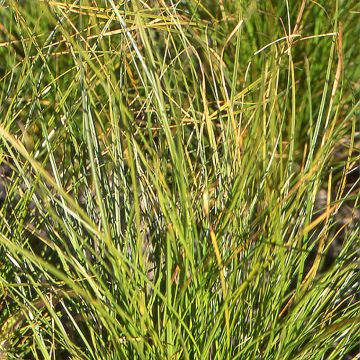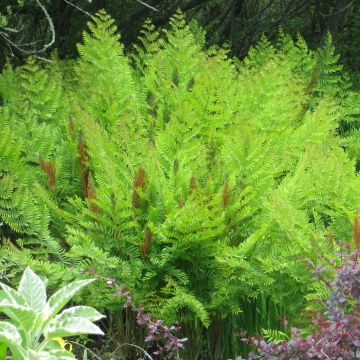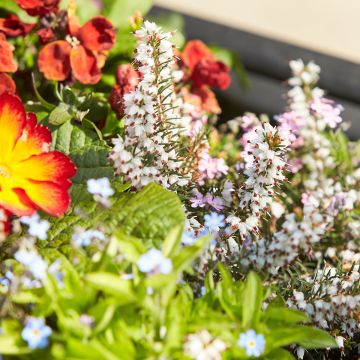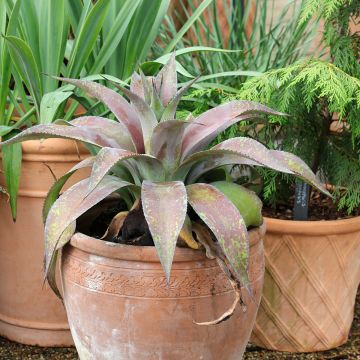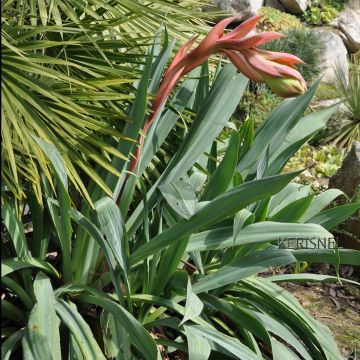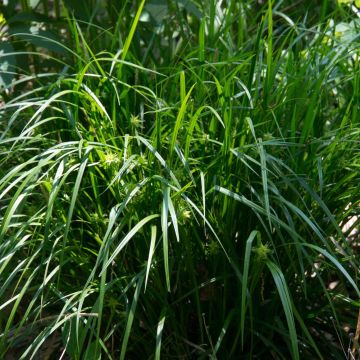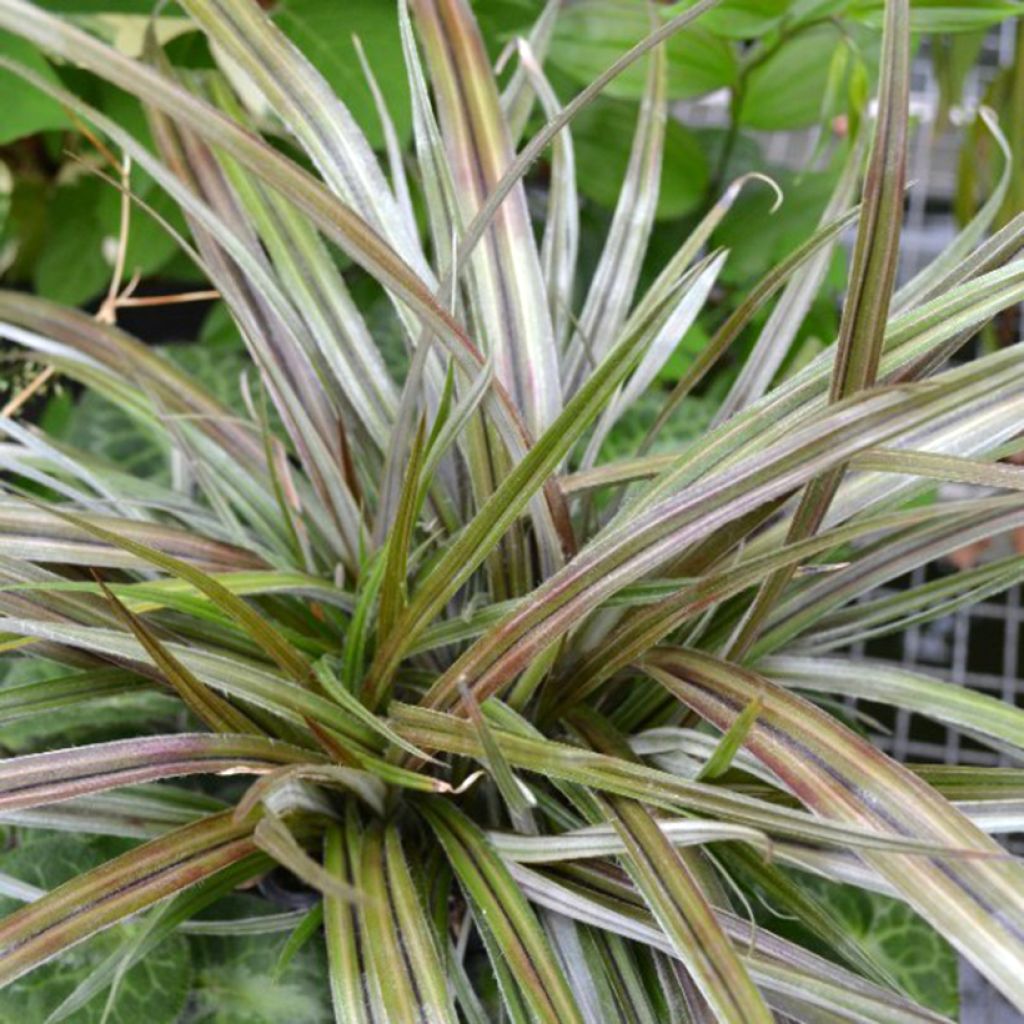

Astelia nervosa Westland
Astelia nervosa Westland
Astelia nervosa Westland
Mountain Astelia, Silver Spear, bush flax
This item cannot be shipped to the selected country
Delivery charge from €5.90
More information
Schedule delivery date,
and select date in basket
This plant carries a 12 months recovery warranty
More information
We guarantee the quality of our plants for a full growing cycle, and will replace at our expense any plant that fails to recover under normal climatic and planting conditions.
From €5.90 for pickup delivery and €6.90 for home delivery
Express home delivery from €8.90.
Does this plant fit my garden?
Set up your Plantfit profile →
Description
Astelia nervosa 'Westland' is a remarkably sculptural perennial plant that resembles a Phormium in its bushy habit. Its linear and slightly trailing leaves have a dark green base and bronze tones that turn red in cold weather. They are entirely covered in bristles that give silvery highlights. This not very hardy plant is decorative all year round, and will make a sensation in mild climate or coastal gardens, in borders, beds or rockeries. Elsewhere, grow it in a pot so you can protect it from the cold during winter. It prefers rich, acidic to neutral, well-drained soils that remain moist in summer.
From the asteliaceae or liliaceae family according to classification, Astelia nervosa is a rhizomatous perennial plant that grows naturally in peaty meadows on the North Island of New Zealand. It develops very silvery fine foliage. 'Westland' is a hybrid derived from A. nervosa that stands out for its sword-shaped, arched leaves tinted with silvery bronze. They turn reddish in winter. It forms a dense clump that can reach 80 to 100 cm high and 40 to 60 cm wide. Floral stems emerge from the clump in spring, in April-May. They bear white flowers arranged in panicles. On the female plants, reddish-orange berries follow.
Astelia 'Westland' is decorative all year and brings a modern touch to your compositions: borders, flower beds, edges or rockeries. It is hardy down to -8°C or even -10°C in sheltered locations so it can be planted in the ground in milder regions. It dislikes heavy frosts, as well as hot and dry conditions. Where it is not possible to plant this original plant in the ground, opt for a beautiful pot. For a contemporary border, combine your Astelia 'Westland' with Muhlenbergia capillaris, a grass with airy pink late summer flowering, and Erigeron karvinskianus with numerous white and pink daisy-like flowers.
Report an error about the product description
Flowering
Foliage
Plant habit
Botanical data
Astelia
nervosa
Westland
Asteliaceae
Mountain Astelia, Silver Spear, bush flax
Cultivar or hybrid
Other Astelia
Planting and care
Astelia nervosa 'Westland' is a hardy perennial plant (between -8 and -10°C) Which can only be grown in the open ground in regions with a mild climate, such as the Atlantic and Mediterranean coasts. Everywhere else, planting in a pot is more suitable to allow overwintering sheltered from frost, in a cool and bright room. Ideally, choose a semi-shaded or sunny location, not in direct sunlight. The astelia appreciates a rich, peaty, non-limestone soil that retains moisture but is reasonably well-drained. In summer, make sure the plant does not lack water. In winter, install a thick mulch at the base of the plant and, if necessary, cover it with a winter fleece.
For plants grown in pots, water during the growth period with non-limestone water, so that the soil never completely dries out. Apply fertiliser once a month. In winter, store the pot in a frost-free room with light and reduce water and fertiliser inputs by allowing the soil to dry superficially between two waterings.
Planting period
Intended location
Care
This item has not been reviewed yet - be the first to leave a review about it.
Evergreen perennials
Haven't found what you were looking for?
Hardiness is the lowest winter temperature a plant can endure without suffering serious damage or even dying. However, hardiness is affected by location (a sheltered area, such as a patio), protection (winter cover) and soil type (hardiness is improved by well-drained soil).

Photo Sharing Terms & Conditions
In order to encourage gardeners to interact and share their experiences, Promesse de fleurs offers various media enabling content to be uploaded onto its Site - in particular via the ‘Photo sharing’ module.
The User agrees to refrain from:
- Posting any content that is illegal, prejudicial, insulting, racist, inciteful to hatred, revisionist, contrary to public decency, that infringes on privacy or on the privacy rights of third parties, in particular the publicity rights of persons and goods, intellectual property rights, or the right to privacy.
- Submitting content on behalf of a third party;
- Impersonate the identity of a third party and/or publish any personal information about a third party;
In general, the User undertakes to refrain from any unethical behaviour.
All Content (in particular text, comments, files, images, photos, videos, creative works, etc.), which may be subject to property or intellectual property rights, image or other private rights, shall remain the property of the User, subject to the limited rights granted by the terms of the licence granted by Promesse de fleurs as stated below. Users are at liberty to publish or not to publish such Content on the Site, notably via the ‘Photo Sharing’ facility, and accept that this Content shall be made public and freely accessible, notably on the Internet.
Users further acknowledge, undertake to have ,and guarantee that they hold all necessary rights and permissions to publish such material on the Site, in particular with regard to the legislation in force pertaining to any privacy, property, intellectual property, image, or contractual rights, or rights of any other nature. By publishing such Content on the Site, Users acknowledge accepting full liability as publishers of the Content within the meaning of the law, and grant Promesse de fleurs, free of charge, an inclusive, worldwide licence for the said Content for the entire duration of its publication, including all reproduction, representation, up/downloading, displaying, performing, transmission, and storage rights.
Users also grant permission for their name to be linked to the Content and accept that this link may not always be made available.
By engaging in posting material, Users consent to their Content becoming automatically accessible on the Internet, in particular on other sites and/or blogs and/or web pages of the Promesse de fleurs site, including in particular social pages and the Promesse de fleurs catalogue.
Users may secure the removal of entrusted content free of charge by issuing a simple request via our contact form.
The flowering period indicated on our website applies to countries and regions located in USDA zone 8 (France, the United Kingdom, Ireland, the Netherlands, etc.)
It will vary according to where you live:
- In zones 9 to 10 (Italy, Spain, Greece, etc.), flowering will occur about 2 to 4 weeks earlier.
- In zones 6 to 7 (Germany, Poland, Slovenia, and lower mountainous regions), flowering will be delayed by 2 to 3 weeks.
- In zone 5 (Central Europe, Scandinavia), blooming will be delayed by 3 to 5 weeks.
In temperate climates, pruning of spring-flowering shrubs (forsythia, spireas, etc.) should be done just after flowering.
Pruning of summer-flowering shrubs (Indian Lilac, Perovskia, etc.) can be done in winter or spring.
In cold regions as well as with frost-sensitive plants, avoid pruning too early when severe frosts may still occur.
The planting period indicated on our website applies to countries and regions located in USDA zone 8 (France, United Kingdom, Ireland, Netherlands).
It will vary according to where you live:
- In Mediterranean zones (Marseille, Madrid, Milan, etc.), autumn and winter are the best planting periods.
- In continental zones (Strasbourg, Munich, Vienna, etc.), delay planting by 2 to 3 weeks in spring and bring it forward by 2 to 4 weeks in autumn.
- In mountainous regions (the Alps, Pyrenees, Carpathians, etc.), it is best to plant in late spring (May-June) or late summer (August-September).
The harvesting period indicated on our website applies to countries and regions in USDA zone 8 (France, England, Ireland, the Netherlands).
In colder areas (Scandinavia, Poland, Austria...) fruit and vegetable harvests are likely to be delayed by 3-4 weeks.
In warmer areas (Italy, Spain, Greece, etc.), harvesting will probably take place earlier, depending on weather conditions.
The sowing periods indicated on our website apply to countries and regions within USDA Zone 8 (France, UK, Ireland, Netherlands).
In colder areas (Scandinavia, Poland, Austria...), delay any outdoor sowing by 3-4 weeks, or sow under glass.
In warmer climes (Italy, Spain, Greece, etc.), bring outdoor sowing forward by a few weeks.

































